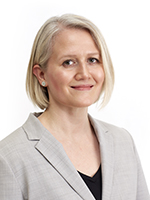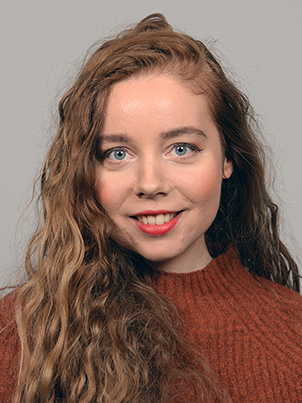Engagement and Absorption
- 01.01.2018–31.12.2027
This project investigates the rhythm and temporality of experiences characterised by deep engagement and/or absorption.
(Illustration photo: Colourbox)
Does time and timing matter?
Music is well known for its ability to engage, yet the nature of this engagement remains elusive. This project explores aspects of rhythm, temporality, and meaning in musical engagement, such as listening and performing. We work from various research angles, including musical sense-making and ethics, absorption in musical performance, spatiality and immersion, and relational interaction.
Methodologies
Methodologies are drawn from music studies, philosophy – phenomenology in particular – 4E cognition, media studies, music technology, music psychology, and affect theory. Work in this project unveils how different modes of engagement and absorption are core facets of musical experience and can lead to novel insights into human perception and action.
Publications
Remy Martin & Nanette Nielsen (shared first authors)
 The vitality and affective potential of the live concert experience is a result of rich, cross-sensory interactions and varied participatory practices. The complexity of such entanglements has recently led philosophers to argue for an enactive, affordance-based approach that interrogates a variety of perceptual and sensory possibilities inherent in aesthetic experiences. Further, Shaun Gallagher's recent addition of the 4As (Affect, Agency, Affordance, Autonomy) to the 4Es (Embodied, Embedded, Enacted, Extended) for clarifying mind–world relations seem to have potent explanatory power for these kinds of encounters. Building on such current philosophical approaches while examining specific (and actual) live musical engagement, this article offers an interpretation of selected audience data from the MusicLab Copenhagen with the Danish String Quartet research concert to discuss particular responses from the audience physically present at the venue. Responding to neuroaesthetic approaches, we clarify the audience members’ individual and collective aesthetic experience through an enactive, affordance-based approach. We suggest that what is at play in the live concert environment is a mode of attentive dynamic listening. Rather than seeking to characterize the audience as passively responding to music, a 4Es/4As approach to aesthetic experience seeks to clarify embodied-enactive audience engagement for which anticipation is a dynamic factor that enables further musical action and resonance, also for the musicians on stage.
The vitality and affective potential of the live concert experience is a result of rich, cross-sensory interactions and varied participatory practices. The complexity of such entanglements has recently led philosophers to argue for an enactive, affordance-based approach that interrogates a variety of perceptual and sensory possibilities inherent in aesthetic experiences. Further, Shaun Gallagher's recent addition of the 4As (Affect, Agency, Affordance, Autonomy) to the 4Es (Embodied, Embedded, Enacted, Extended) for clarifying mind–world relations seem to have potent explanatory power for these kinds of encounters. Building on such current philosophical approaches while examining specific (and actual) live musical engagement, this article offers an interpretation of selected audience data from the MusicLab Copenhagen with the Danish String Quartet research concert to discuss particular responses from the audience physically present at the venue. Responding to neuroaesthetic approaches, we clarify the audience members’ individual and collective aesthetic experience through an enactive, affordance-based approach. We suggest that what is at play in the live concert environment is a mode of attentive dynamic listening. Rather than seeking to characterize the audience as passively responding to music, a 4Es/4As approach to aesthetic experience seeks to clarify embodied-enactive audience engagement for which anticipation is a dynamic factor that enables further musical action and resonance, also for the musicians on stage.
Simon H?ffding, Nanette Nielsen, Bruno Laeng (shared first authors)
 Literature in the psychology of music and in cognitive psychology claims – paradoxically – that musical absorption includes processes of both focused attention and mind wandering. We examine this paradox and aim to resolve it by integrating accounts from cognitive psychology on attention and mind wandering with qualitative phenomenological research on some of the world’s most skilled musicians. We claim that a mode of experience that involves intense attention and what superficially seems like mind wandering is possible. We propose to grasp this different mode of experience with a new concept: “mind surfing”. We suggest that a conjoined consideration of attention’s intensive and selective capacities can partially explain how one can be both focused and freely “surfing” on a “musical wave” at the same time. Finally, we couple this novel and foundational work on attention with a 4E cognition account to show how music acts as an affective and cognitive scaffold, thereby enabling the surfing.
Literature in the psychology of music and in cognitive psychology claims – paradoxically – that musical absorption includes processes of both focused attention and mind wandering. We examine this paradox and aim to resolve it by integrating accounts from cognitive psychology on attention and mind wandering with qualitative phenomenological research on some of the world’s most skilled musicians. We claim that a mode of experience that involves intense attention and what superficially seems like mind wandering is possible. We propose to grasp this different mode of experience with a new concept: “mind surfing”. We suggest that a conjoined consideration of attention’s intensive and selective capacities can partially explain how one can be both focused and freely “surfing” on a “musical wave” at the same time. Finally, we couple this novel and foundational work on attention with a 4E cognition account to show how music acts as an affective and cognitive scaffold, thereby enabling the surfing.
Published Jan. 24, 2025 1:01 PM
- Last modified Jan. 24, 2025 1:12 PM




.jpg)


 The vitality and affective potential of the live concert experience is a result of rich, cross-sensory interactions and varied participatory practices. The complexity of such entanglements has recently led philosophers to argue for an enactive, affordance-based approach that interrogates a variety of perceptual and sensory possibilities inherent in aesthetic experiences. Further, Shaun Gallagher's recent addition of the 4As (Affect, Agency, Affordance, Autonomy) to the 4Es (Embodied, Embedded, Enacted, Extended) for clarifying mind–world relations seem to have potent explanatory power for these kinds of encounters. Building on such current philosophical approaches while examining specific (and actual) live musical engagement, this article offers an interpretation of selected audience data from the MusicLab Copenhagen with the Danish String Quartet research concert to discuss particular responses from the audience physically present at the venue. Responding to neuroaesthetic approaches, we clarify the audience members’ individual and collective aesthetic experience through an enactive, affordance-based approach. We suggest that what is at play in the live concert environment is a mode of attentive dynamic listening. Rather than seeking to characterize the audience as passively responding to music, a 4Es/4As approach to aesthetic experience seeks to clarify embodied-enactive audience engagement for which anticipation is a dynamic factor that enables further musical action and resonance, also for the musicians on stage.
The vitality and affective potential of the live concert experience is a result of rich, cross-sensory interactions and varied participatory practices. The complexity of such entanglements has recently led philosophers to argue for an enactive, affordance-based approach that interrogates a variety of perceptual and sensory possibilities inherent in aesthetic experiences. Further, Shaun Gallagher's recent addition of the 4As (Affect, Agency, Affordance, Autonomy) to the 4Es (Embodied, Embedded, Enacted, Extended) for clarifying mind–world relations seem to have potent explanatory power for these kinds of encounters. Building on such current philosophical approaches while examining specific (and actual) live musical engagement, this article offers an interpretation of selected audience data from the MusicLab Copenhagen with the Danish String Quartet research concert to discuss particular responses from the audience physically present at the venue. Responding to neuroaesthetic approaches, we clarify the audience members’ individual and collective aesthetic experience through an enactive, affordance-based approach. We suggest that what is at play in the live concert environment is a mode of attentive dynamic listening. Rather than seeking to characterize the audience as passively responding to music, a 4Es/4As approach to aesthetic experience seeks to clarify embodied-enactive audience engagement for which anticipation is a dynamic factor that enables further musical action and resonance, also for the musicians on stage.